1. While both vehicles are off, attach the RED (+) POSITIVE claw onto the RED (+) POSITIVE terminal of the working battery. Now, attach the other RED (+) POSITIVE claw to the RED (+) POSITIVE dead battery.
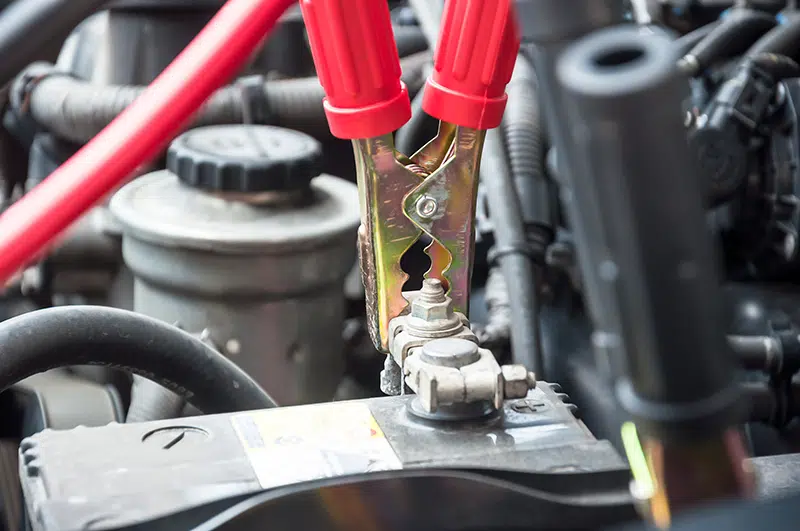
2. Attach the BLACK (-) NEGATIVE claw onto the BLACK (-) NEGATIVE terminal of the working battery. Now, attach the other BLACK (-) NEGATIVE claw to a non-painted metal surface of the car with the dead battery (A nut or bolt on the frame preferably.)
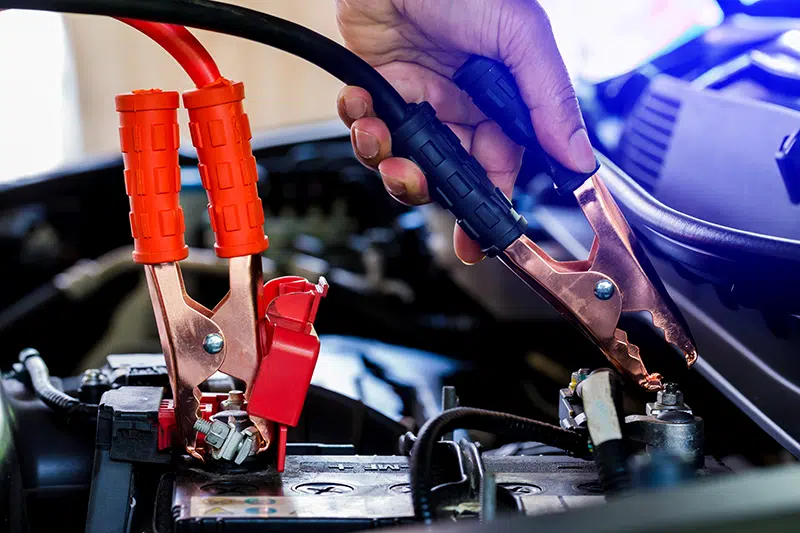
3. Start the car with the working battery and wait about 2 minutes. Then, start the car with the dead battery. If it starts, you are good to go!
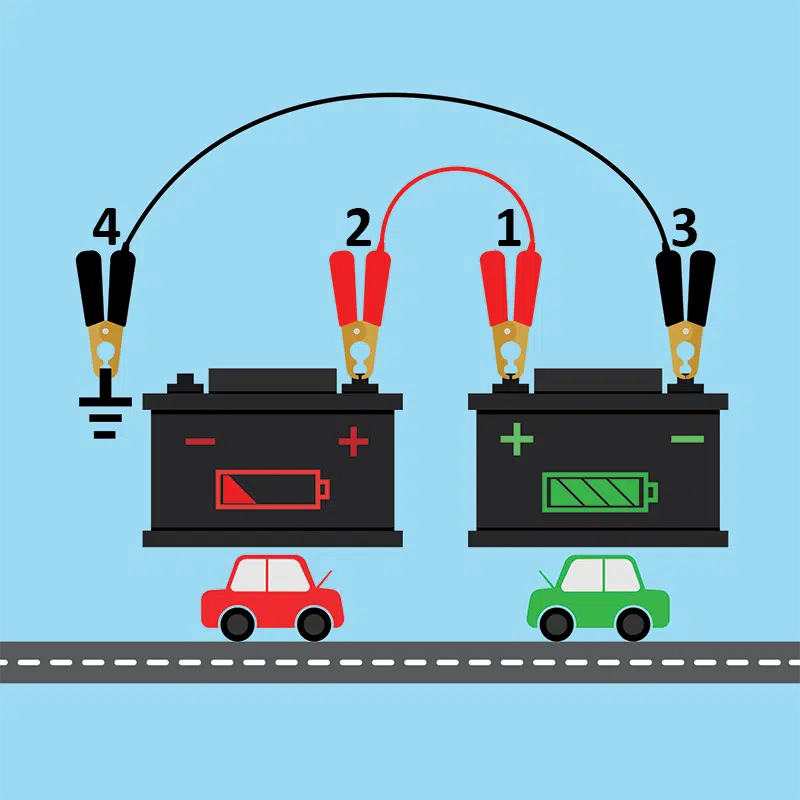
You may need to pull the plastic cover off of your RED (+) POSITIVE terminal to expose the metal connections before attaching the jumper cables to each vehicle.
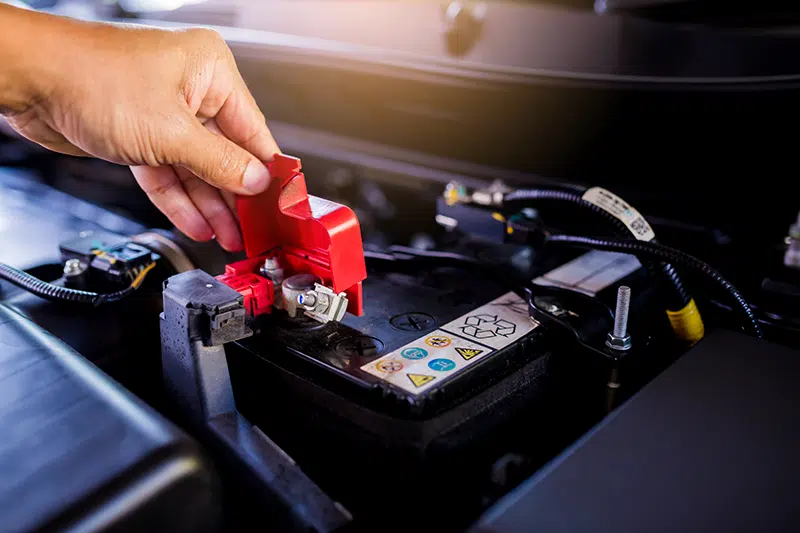
If The Dead Battery Starts
You are in good shape! Detach the BLACK (-) NEGATIVE claws in reverse order from above and then detach the RED (+) POSITIVE claws in reverse order from above. (Detach from your car first, then the “helper” car for both BLACK and then RED)
If The Dead Battery Doesn’t Start
- Your car battery connections are corroded or loose. This will prevent a good connection with the jumper cables. Use a wire brush or tinfoil to scrape off the corrosion and/or use a wrench to tighten the connections on the terminal.
- Your alternator might be going out. The alternator restores the battery charge after its used to start the car. It also provides power to electrical accessories while the car is using gasoline. If you notice lights flickering on your dashboard and/or inside your car while it is running, then there is a good chance you have an alternator issue instead of a dead battery.
- Your battery might not be able to hold a charge and needs replacing. It may be time to call your roadside assistance company to help out.
Important Safety Information to Know
- Read Your Owners Manual: Some vehicles are unique and therefore may store your car’s battery in a different location than under the hood. It is always a good idea to brush through the owners manual for important safety information before attempting to jump start the vehicle.
- Keep Jumper Cables in Your Car: Preparing for the worst while expecting the best is always a good idea. You can get a decent pair of jumper cables online or at your local hardware store for less than $25. Keep them in your trunk for the future.
- Use Safety Glasses: You should always take precautions when working under the hood of your car. Plastic safety glasses could help prevent any corrosion from the battery accidentally flying into your eyes. Never attempt to use your breath to blow off corrosion. this could lead to dust and chemicals becoming airborne and flying into your eyes.
- Use Rubber Gloves: Latex gloves work well to keep the harsh chemicals from your car battery touching your skin. Try to keep a box of them in your trunk along with your jumper cables and other safety items.
- Purchase a Jump Kit: These little boxes fit well inside your trunk and will allow you to freely jump start your vehicle without the need of a kind stranger. They can be found online for around $50.
- If your battery appears to be leaking or smoking, DO NOT ATTEMPT TO JUMP START because it could explode. If your battery shows any signs of liquid on top or a physical crack where the interior is exposed, then it is time to call a professional.
- Avoiding Electrocution: Make sure your jumper cables are not ripped or broken along the lines. Make sure no metal objects could obstruct the connection while you are attempting to jump start your battery. This would include necklaces, bracelets, rings etc. Getting these objects too close during the process could create an arc and damage your battery or cause serious injury.
- Smoking or using open flame around your battery can cause a dangerous scenario. Your battery could emit very flammable hydrogen gas. Make sure the jumper cables never touch each other when they are connected, it could cause an arc of electricity which can cause injury.
- Never try to jump start a frozen battery because it could explode.
Added Information for Jump Starting Your Car
You may notice that most information sources claim to place the BLACK (-) NEGATIVE claw on an unpainted metal surface such as a nut or bolt within the car of the dead battery. This is to prevent sparking. If you are not familiar with how to properly ground the connections with a metal source, then you can simply use the BLACK (-) NEGATIVE terminal in its place and just prepare for a little bit of sparks during attachment. DO NOT DO THIS if your battery appears to be damaged or leaking.
Multiple sources also suggest turning off the cars before you disconnect the batteries from the cables due to the possibility of a surge. One of the jobs your battery is designed for is to handle surges of electricity, but if you feel more comfortable turning off both vehicles before detaching the jumper cables, then feel free to use this extra step.
Jump Start for a Manual Transmission
If you drive a manual transmission, you’re in luck! you can jump your battery using the force of the transmission.
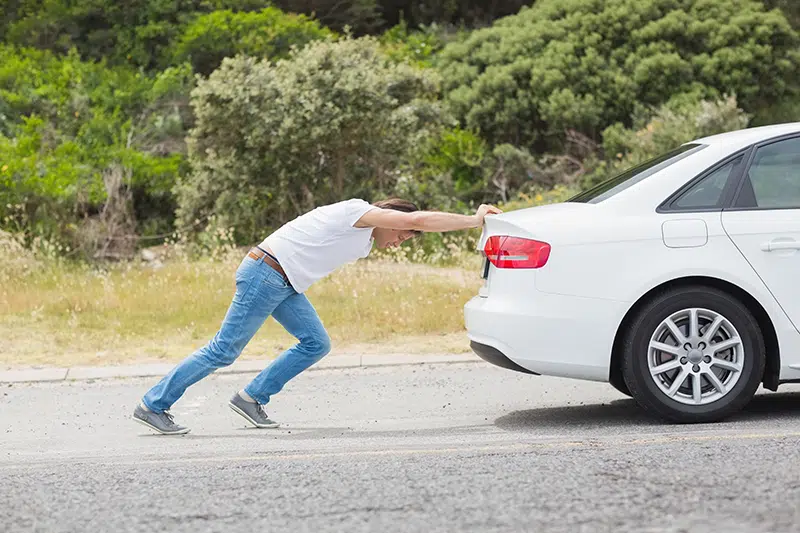
- Engage the clutch with your left foot and shift into first gear. Do not release the clutch!
- Have a friend push your vehicle forward (hopefully downhill.) Once the car starts moving, it will be easier for them to finish pushing while facing the vehicle. Make sure your friend uses their legs to prevent a back injury.
- Quickly release the clutch with your left foot and give a little pressure on the accelerator. Your vehicle will jolt a tad when you engage the clutch, but then it will be running like normal.

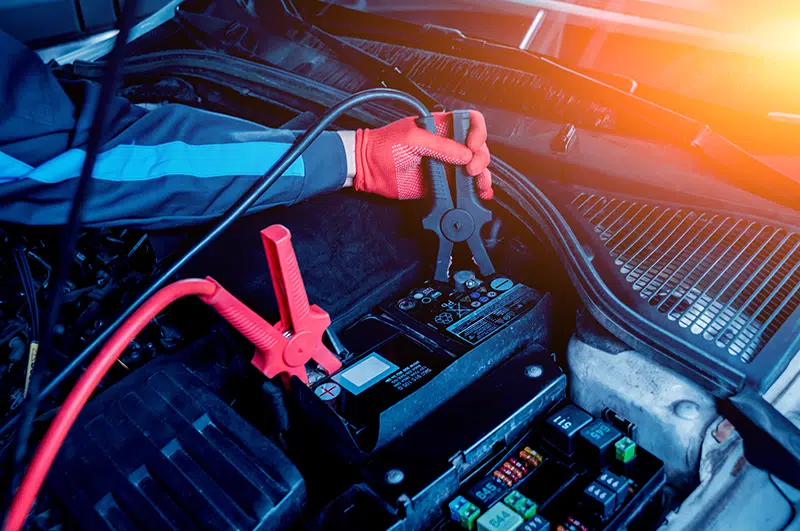
Comments are closed